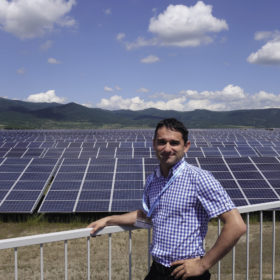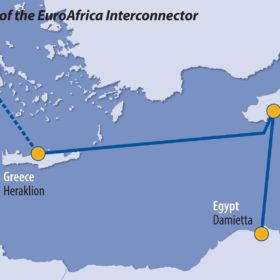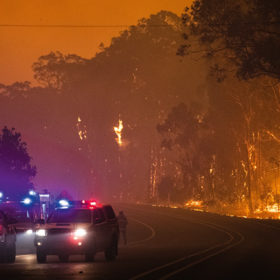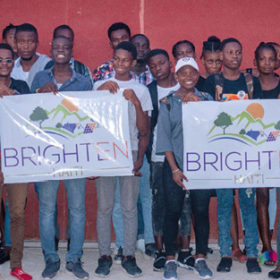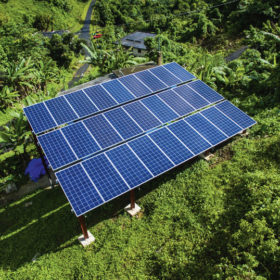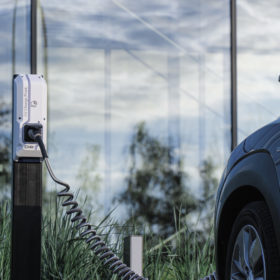Ripple effects of Russia-Ukraine
The war in Ukraine has acted as a brutal wake-up call for governments to act and reduce their dependence on Russian fossil fuels. Many have pledged to hasten project timelines for renewables, but there are mixed reports about impacts on investor confidence and projects under development in Ukraine’s neighboring countries. Marija Maisch reports.
Big data steps in
US-based semiconductor manufacturer Intel is one of the biggest chipmakers on the planet and is working on net-zero by 2040 targets. But it’s also looking outward, aiming to modernize grids at the utility-level. Mike Bates, general manager of Intel’s energy vertical, sat down with Tristan Rayner to discuss Intel’s solution for grid-level monitoring and control for utility customers. The aim is to allow for “unlimited” renewables to be added without bottlenecks, and coalitions of grid operators across the globe are forming.
Making connections
Plans to connect European and African grids are taking shape, with a 1 GW cable that will snake its way under the Mediterranean Sea from Egypt to Cyprus. Further interconnections from Cyprus to the Greek island of Crete and on to the European mainland mean that before long, kilowatt hours generated in the deserts of North Africa and beyond could be powering homes and businesses as far away as Western and Northern Europe.
In search of the source
At the beginning of June 2021, during a meeting with Spanish businesspeople organized by the Portuguese-Spanish Chamber of Commerce, the Portuguese Prime Minster António Costa urged his neighbors to work on jointly exploiting the potential of plentiful lithium reserves found on the Iberian Peninsula. As Luis Ini reports from Madrid, his words reflect an increasingly evident reality: the need to achieve autonomy in the field of energy, especially in energy storage.
The stage is set for India
At the end of September, the Renewable Energy India (REI) Expo is returning to the India Expo Centre, Greater Noida, for its 15th edition. It comes at an exciting time for energy in India, as the country begins to ramp up its own domestic solar manufacturing, and looks for a leading role in the development of both green hydrogen and electric vehicles. Ahead of the event, pv magazine caught up with Rajneesh Khattar, senior group director – energy portfolio, at Informa Markets, the show organizer, for a look at India’s changing energy landscape.
Islands in the sun
Islandable microgrids are a growing niche, especially in remote regions at the end of electricity networks or parts of the world prone to natural disasters and outages. Renewably powered microgrids can provide a community with more stability and operate independently, so vulnerable regions are not reliant on distant sources of generation, as was the case during Australia’s Black Summer bushfires of 2019-20, when communities were left powerless. From California to Australia’s southern coast, the study and deployment of microgrids is on the rise. pv magazine’s Blake Matich takes a look.
pv magazine Award
Throughout the year we have encouraged solar and energy storage companies that are going above and beyond in the realm of sustainability to submit their work for consideration in the annual pv magazine Award. Here, we feature some of the most promising applications received thus far, that are in the running to be the 2022 sustainability champion. Award winners in all categories will be announced at the start of 2023.
Puerto Rican resilience
Before Puerto Rico had a chance to recover from Hurricane Maria, in 2017, it was rocked by earthquakes and then, in September 2022, the island was struck again – this time by Hurricane Fiona. These disasters severely impacted Puerto Rico’s infamously fragile power grid, but have emboldened local communities to take power into their own hands through solar and battery storage, and increasingly in the form of microgrids. Compelled by catastrophic circumstances, Puerto Rico must now push toward energy resilience and in the process may see itself become a model not just for other islands, but mainland grids as well.
V2G driving grid changes
The uptake of EVs in the years ahead will add up to staggering battery capacity, mostly sitting idle on driveways. The two-way flow of electricity from EV batteries, known as vehicle to grid, could not only enable power systems to rely on intermittent renewables, but could also be the trump card for network operators to respond to grid disturbances. However, there are still a few catches to be worked out, as Marija Maisch explains.
Overview of home charging stations in Germany
It is not a leader, but Germany is moving quickly on the adoption of electric vehicles. And with a relatively high uptake of rooftop solar, homeowners are keen to ensure they’re “driving on sunshine” as often as possible. A market survey of EV chargers in Germany provides key insights into what is available today and what is in store as EV uptake continues to accelerate. Michael Fuhs, pv magazine’s head of editorial, reports.
